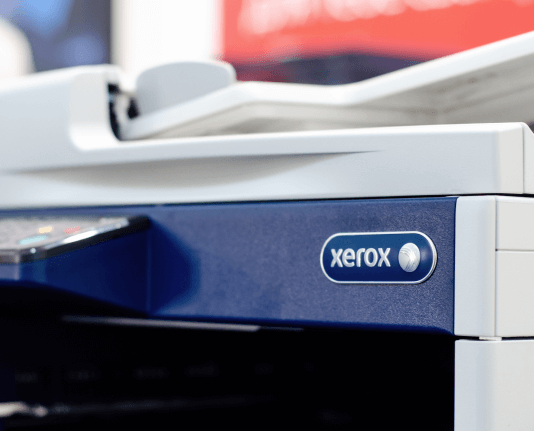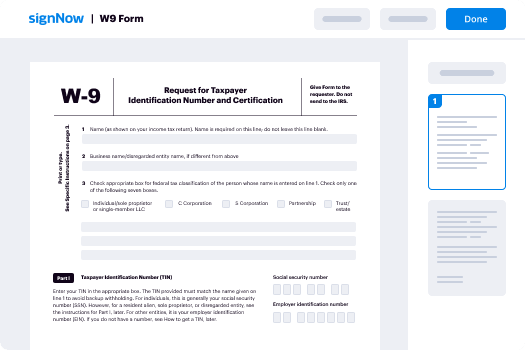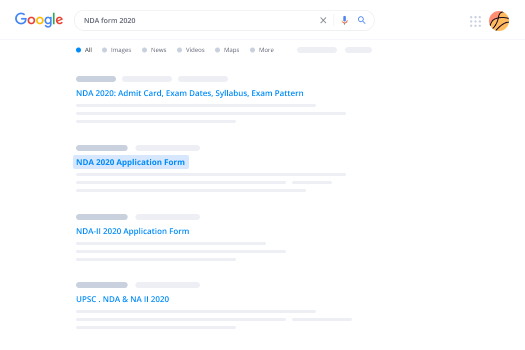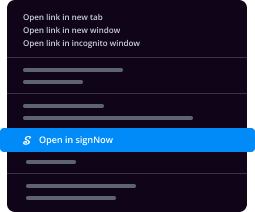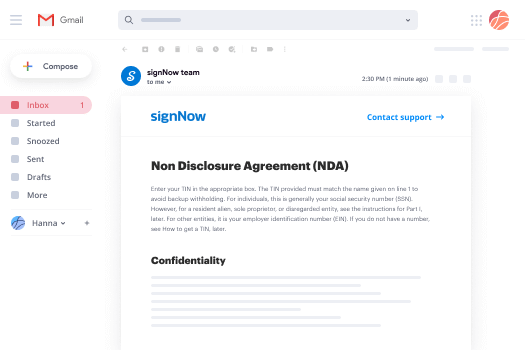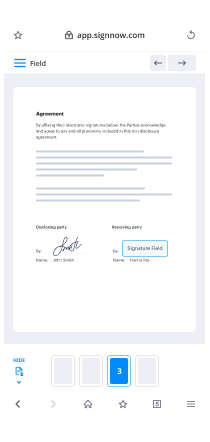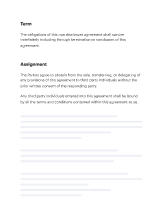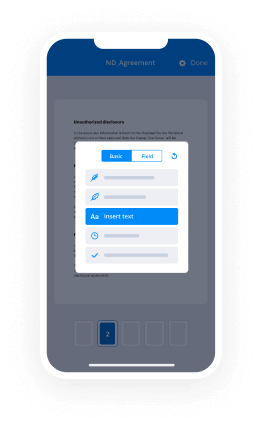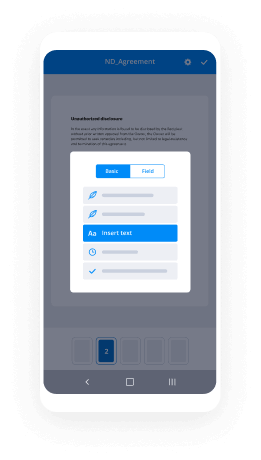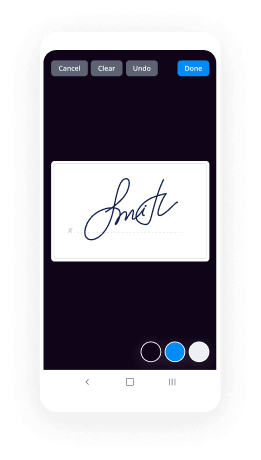Sign Form for Legal Computer
Make the most out of your eSignature workflows with airSlate SignNow
Extensive suite of eSignature tools
Robust integration and API capabilities
Advanced security and compliance
Various collaboration tools
Enjoyable and stress-free signing experience
Extensive support
Keep your eSignature workflows on track
Our user reviews speak for themselves






Comprehending the advantages of signform with airSlate SignNow
In the current rapid-paced corporate landscape, optimized document management is essential. airSlate SignNow offers an effective signform solution that allows enterprises to transmit and electronically sign documents with ease. Featuring an easy-to-navigate interface and powerful functionalities, it meets the demands of both small and mid-sized companies, delivering substantial return on investment without unexpected charges.
Procedure to utilize signform with airSlate SignNow
- Launch your internet browser and navigate to the airSlate SignNow webpage.
- Establish an account for a complimentary trial or log in to your current account.
- Choose the document you want to sign or distribute for signing.
- If you intend to reuse the document, convert it into a template for future applications.
- Access your document and apply necessary modifications: incorporate fillable fields or other essential details.
- Add your signature to the document and assign signature fields for recipients.
- Click 'Continue' to set up and send the eSignature invitation.
By utilizing airSlate SignNow's functionalities, organizations obtain a robust mechanism for document signing and management. The platform is structured to be user-friendly and adaptable, making it a superb selection for diverse business sizes.
Begin enhancing your document procedures today with airSlate SignNow. Register now for your complimentary trial and discover the ease and effectiveness of eSigning!
How it works
Rate your experience
-
Best ROI. Our customers achieve an average 7x ROI within the first six months.
-
Scales with your use cases. From SMBs to mid-market, airSlate SignNow delivers results for businesses of all sizes.
-
Intuitive UI and API. Sign and send documents from your apps in minutes.
A smarter way to work: —how to industry sign banking integrate
FAQs
-
What is a signform and how does it work with airSlate SignNow?
A signform is an electronic document that allows users to create, send, and sign forms digitally. With airSlate SignNow, you can easily customize your signform to include fields for signatures, dates, and other essential information. This streamlined process ensures that your documents are signed quickly and securely, enhancing your workflow.
-
How much does it cost to use airSlate SignNow for creating signforms?
airSlate SignNow offers a variety of pricing plans to cater to different business needs, starting with a free trial. Once you explore the features, you can choose a plan that fits your budget and requirements for creating signforms. Our cost-effective solution ensures you get the best value while simplifying document signing.
-
Can I integrate airSlate SignNow with other software to enhance my signform experience?
Yes, airSlate SignNow provides integrations with various applications such as Google Drive, Salesforce, and Microsoft Office. These integrations allow you to seamlessly create and manage your signforms alongside your favorite tools. This flexibility enhances your productivity and ensures a smooth workflow.
-
What security features does airSlate SignNow offer for my signforms?
airSlate SignNow prioritizes the security of your signforms with features like encryption and multi-factor authentication. These measures protect your documents and ensure that only authorized users can access sensitive information. This commitment to security helps you conduct business with confidence.
-
Can I customize my signform in airSlate SignNow?
Absolutely! airSlate SignNow offers extensive customization options for your signforms. You can add your branding, choose from various field types, and configure the layout to suit your specific needs, ensuring that your signform reflects your business identity.
-
Is it easy to track the status of my signforms sent through airSlate SignNow?
Yes, airSlate SignNow provides a straightforward dashboard that allows you to monitor the status of all your sent signforms. You can quickly see who has signed, who still needs to sign, and send reminders if necessary. This feature helps you stay organized and ensures timely completion of your documents.
-
What types of documents can I create as signforms with airSlate SignNow?
You can create various types of documents as signforms with airSlate SignNow, including contracts, agreements, and consent forms. The platform is versatile and can accommodate any document that requires a signature, making it ideal for businesses across different industries.
-
Is it legal for a teacher to check the search history of a school-issued laptop?
At least where I live, the answer is yes, it is, because the student has no ownership of the device or the account. Both belong to the school. I am not a lawyer, and so I certainly can't give legal advice, but we have very specific policies in place regarding this.In the school at which I teach, parents and students have to sign forms indicating that they understand this and agree to only use the computers for school work. They have a requirement of "acceptable use." Our tech department can actually go into the search history without actually accessing the physical laptops. They can also see what a student is accessing while the student is on the computer and they can take control of the computer remotely.Students are informed of this at the beginning of each school year, but there are still students who find themselves losing privileges because they violate the policies.I have never checked a student's search history, but if I suspected the student was doing something concerning, I would take my concerns to my principal and let him take it from there.
-
What happens if a funeral home picks up remains from the morgue without authorization?
Where I work, if you release the wrong body, you are fired. No second chances. We take it very seriously.2 of the 3 Medical Examiner/ Coroner’s offices I have worked for have morgues, and each one had written procedures.Where I work now there is a process, and we have a checklist that has to be signed every time.One of the steps is verifying that we have a letter from the funeral home. This must be on their letterhead, it must have the decedent’s name spelled exactly like we have it. It has who has authorized the funeral home, and their relationship to the decedent. It also must be signed by a funeral director. There is a different form for families who would like to pick up a loved one and not use a funeral home- which is perfectly legal.We also need to make sure the pathologist has authorized the release. Most bodies are ready to release the same or next day after the autopsy or external exam. We will hold decedent’s for a few reasons.The main one is scientific identification. Either the decedent was not visually identifiable, or they may just need to confirm the decedent is who we were told it was. Depending on which method was used, this could take a while.We may hold a body for a day or to see if any additional injuries or bruises are revealed as the blood settles (lividity) to the dependent areas. Usually this is just infants.We might be waiting for some biological specimens to be returned. Sometimes we need to send part of the femur to the lab to extract DNA. Or bones could have been sent to our anthropologist.There may be a court order for us to hold, while the courts are deciding who is the Legal Next-of-Kin.If there are 2 or more people there with similar names, their paperwork has an additional colored tag on it.When the funeral home arrives, we will check the body bag tag. Then we open the body bag, and show them the ankle tag (it looks just like the hospital ones they put around your wrist). We confirm that the tags match, and that verbally ask them if that is who they are there to pick up. We then will sign over any personal belongings.When I go to hospitals, they usually have a form to fill out so they can document where the decedent went.Occasionally a NOK will change their mind, and use a different funeral home. If the decedent has already been released to the funeral home, it is usually just a matter of a phone call, and they will work out the transfer themselves. If the death certificate was electronic, we will just log onto the computer and transfer it that way. If the funeral home does not participate in the electronic death certificate system (usually funeral homes from a different state) we will just print out a new certificate and mail it to them.
-
As a patient, do I have the right to see what the doctor is typing into the computer during my office visit?
The actual medical record, whether in paper or electronic form, is owned by the physician and medical office.However, the information contained in the medical record is property of the patient.You do not have the right to physically take the paper chart or remove the record in some other way. You are entitled to a copy of your medical records.This is done in the front of the office. You sign a release to get a copy of your records and these are provided to you. Legally, offices are allowed to require a reasonable fee for the expense of making this copy. It’s usually less than $25.I will often turn my computer around to show my patients various lab results or results of other tests.I do not believe a patient would have the right to look over my shoulder and read as I am generating the note. None of my patients has ever asked to do this.Once I sign the note, it becomes a part of the legal medical record and the patient can request it.
-
Why are sawed-off shotguns illegal but assault rifles and semi-automatics are not (in USA)?
The answer may surprise you.Brace yourself for a bunch of people telling you that assault rifles are highly regulated. This is because to be a true assault rifle the firearm must be capable of full-auto or burst fire. This requires a license, additional background check and then the gun will be VERY expensive. Also, no “machine gun “ (the legal term for full-auto) that was not registered with the ATF by 1986 may be possessed by private citizens.(EDIT: This was suggested by another Quora SME: Also, no “machine gun “ (the legal term for full-auto) that was not registered with the ATF by 1986 may be possessed by private citizens. I can potentially see where he is going with his proposed edits. If a gun was manufactured, but not registered, then it would be illegal to possess even if one had all the appropriate licenses. That is my take away; but I could be wrong so if he would like to add a comment, that would be great and much appreciated!)Brace yourself for a small group of people telling you that the term “assault rifle” was made up by liberals. Not true; goes back to the StG 44 and the DoD did have a definition as far back as the 1960s, even if the Army no longer uses it. (EDIT: The reason I wrote this the way I did is not because I am confused about the origins of it or “assault weapons. Instead, I did it because a small minority of pro-2A folks have latched on to the myth that assault rifle is a made-up term too. In the days before I wrote my answer I had very long discussion with a young Army private who refused to accept the fact that assault rifle was not a made-up term by liberals.)Semi-automatic clones of assault rifles are very seldom used in crime. By very seldom, the rate is not statistically different from zero. While they are shorter and more compact than modern rifles, the high capacity magazine raises the height of the rifle making it less concealable. Additionally, it is more unwieldy than a sawed off shotgun. Therefore, shotguns are used far more frequently than rifles.The number one reason: the shotgun is a devestating weapon at close range. Period. Dot. It is far more effective and lethal than an AR-15 or AK-47 would be. While I do not want to be shot by any firearm, a shotgun at close range would be the worst case scenario.
-
What conversations have you overheard in a language they assumed you don't know?
Here’s one that I overheard and I live to tell the tale because of it…My wife and I were travelling overnight across North India in an empty train on a not very frequented route.A group of five university students boarded our compartment in the early hours of the morning, spotted us and sat together in a row on a free seat facing us out of the 80 odd other free seats available in the compartment.They spoke in low tones but I could hear what they were saying and it didn’t take very long for me to realise they were talking about us. I pretended to look out of the window and not pay any attention to them. I also whispered to my wife to do the same and ignore them.That pretence saved my life and perhaps that of my wife as well…The boys conversed in Hindi, which I speak but which they didn’t know - for some obscure reason I’ve always been identified as a Sri Lankan or Malaysian and never as the south Indian that I am. I let people think what they will and these guys probably assumed I was a foreigner or maybe it didn’t even occur to them that I might know their language.In the conversation that I overheard, these boys decided to rush us, knock me out, throw me out of the moving train and rape my wife.As simple as that. It didn’t take them very long to come to that decision as well which only goes to prove how psychotic they were. Or that they’d done this earlier. Throwing me out of the running train would have most certainly meant certain death or serious injuries. And once done with her, they were likely to have thrown my wife out of the train as well.I, at first, thought they were just fantasising about their course of action but soon realised they weren’t. I whispered to my wife what they were saying, to discreetly take her Swiss knife out of her bag and keep it ready. I also told her when they rushed us to kick wildly at their groin areas and to stab as many as possible, as viciously as she could.We then waited. And it didn’t take them very long to rush us. And rush us they did as one man, all five of them together…Years ago I had been a serious practitioner of Tae Kwon Do and had kept in practice with some of its finer close-quarter defensive and offensive techniques. My wife and I had also just finished a six-week long, high-altitude, Himalayan trek and were incredibly fit. On top of everything else I’m pretty big for an Indian so I was quite confident that I’d be able to take control of the situation though my heart was beating like crazy.I waited for them to close in and then I got up in a rush, stepped forward, stood like a rock and quietly said the first two of them would die really horrible deaths…in Hindi, in their language. They stopped, they were shocked I spoke Hindi and had understood them all along.My wife stood behind me with her knife.This was something completely unexpected for them. They just froze and not one of them took the crucial first step. Their plan collapsed in a fraction of the time they’d taken to decide on their extreme action.Cowards that they were, they quietly slunk off, without a word, to the end of the compartment and stepped off at the next station all the while giving us baleful looks.That’s one adventure I’ll never forget and which was a lesson in itself - there are advantages to keeping some skills secret!Especially language skills…
-
Does writing an agreement on plain paper and getting it signed make it a legal document (without any witnesses present)?
All documents require different different modes of proof in the eyes of law. Some documents like wills , powers of attorney etc mandatory require that they should be witnessed by two major witnesses . Some documents which do not fall in this clause and still be enforceable can be oral contracts or agreements in which case the onus of proof will be tough and surrounding circumstances and evidence should be strong to corroborate the same such as putting forth the reason as to why the same was oral and was not penned down and witnessed . Surrounding circumstantial evidence like proving the passing of consideration has to be strictly proved as agreements and contracts without passing of consideration are void. For a safe agreement and contract the same should be in writing on appropriate value of stamp paper as prescribed in the state where the same is executed and the same should be witnessed by at least two witnesses and preferably got attested by a Notary Public so that the same may be more authentic as the Notarial attestation carries sanctity to the same which is accepted all over the world. Agreements and documents executed on plain paper are also acceptable in evidence . But to be read in evidence all documents so to be read in evidence are to be exhibited by the person who has executed or witnessed its execution. At the time of exhibiting the same in evidence the opposite party can raise an objection on account of non stamping or under stamping of the same. But this short coming can be legally got sorted out by depositing a penal amount on the unpaid or deficient stamp duty that it should Have been written on. Here I would like to bring to your notice that short coming of deficiency of affixing stamp duty as required by the applicable under the law where the same is executed can be covered in case of all documents except the stamp duty applicable in a Demand promissory not which defect can not be rectified under the provisions of any law in force. And this objection can be entertained at any stage of the litigation and the same shall be up held.
-
Where can I find non-disclosure agreement templates for candidates that I am interviewing for my stealth startup?
Here is an awesome NDA: Page on hbs.eduI would suggest that you go through this article to understand the various clauses of a non-disclosure agreement here: What is Non-Disclosure Agreement?
-
Any new service business?
Access Free Legal Forms with Shake by LegalShieldShake by LegalShield offers instant access to a wide variety of free legal forms for small business and day-to-day activities. The documents include loan agreements, non-disclosure agreements, lease agreements, skilled labor contracts, contract work agreements and much more. You can fill out, review and sign these documents on your computer, tablet or smartphone. For a video demonstration of the app, click on link in this post.
-
What kind of paperwork do airline pilots need to complete during their flight?
There’s quite a bit of paperwork involved in the airline business. You ask “during the flight” but I’ll expand a bit, going through a typical flight from signing on to signing off. Come along.We show up at dispatch where a flight plan package is normally waiting for us. Sign a form that confirms you’re current and have the correct licenses (specific to our Civil Aviation Administration I think, since I don't have to sign it in other places), then after having gone through the flight plan package sign for acceptance of dispatch with that load (legal requirements but in other airlines we had to sign the flight plan itself so the method is company specific). Sign next to your name on a copy of the General Declaration, an official form that lists the crew of a flight (Company specific). For flights to China we have to also sign a form that has our passport numbers on it, to be handed over to staff on arrival there (China flights specific).The flight plan package is the reason pilots show up early for a flight as it can be a lengthy matter in itself, especially for long flights; it contains:The to be signed dispatch release form (Company requirement).The weather briefing of at the very least the departure, arrival and destination alternate airport and enroute alternates if required to support the operation. A lot more relevant enroute alternates are included but not strictly necessary. (legal requirement)The NOTAMS of all relevant airports [NOTAM - Wikipedia, NOTAMS are NOtices To AirMen that list unserviceable equipment, airport works, adjusted procedures, etc…] (legal requirement).Weather charts of enroute weather, with the position of jetstreams, the predicted areas of icing and turbulence if signNow, charts with winds enroute (legal requirements).A chart with the route plotted out for EDTO flights or long flights [EDTO or ETOPS operations need enroute airports to support flying further than an hour away from a diversion option] (legal requirement).A form that lists the MEL items if the plane has them; not strictly necessary but nice of the airline to inform us before going on board so we can plan more efficiently (company specific). [MEL or Minimum Equipment List items are items that are inoperative or considered inoperative on the airplane but don't prevent the airplane from being airworthy. Depending on the item there may be specific procedures to take into account.]The actual flight plan which has on it: the load, the fuel planning details, the filed flight plan with Air Traffic Control or ATC, the flight log details at every waypoint enroute, the winds at every waypoint at different levels, and the fuel log. It is especially the flight log and fuel log here that have to continuously be updated and followed during the flight later on. (Legal requirements). If PNRs (points of no return), fuel critical points or EDTO/ETOPS airports and equitime points are used, those are listed as well.A form that specifies that GPS signals will be available around the time of arrival at the destination, relevant for navigation based on GPS. (Legal requirement unless on board equipment can predict it).A fuel prediction form with graphs and numbers that give us a statistical idea about how much fuel the flight uses, to assist with efficient fuel planning (company specific).Any other relevant information for the flight, for example about delays in China or other flights that use the same route at busy periods… (company specific)Once that’s reviewed, done and signed we go to the airplane. Depending on where we are we may have to sign or fill out immigration forms to go airside.When we get on the plane there will be several people waiting for us: engineers/mechanics that take care of the technical stuff on the airplane, a load controller who oversees the loading and boarding of the plane, and a refueler who wants to know how much Jet A1 kerosine he can sell us today. Give that man a filled out form - not yet signed - with a standby fuel figure; we will finalize the last three to five tons of fuel at the end but he needs to start now to get it all on on time. Then have a look in the technical log or maintenance log that the engineer/mechanic gives you: is the airplane released for flight yet? If not: what are they still working on? Go through that log and note all the specifical technical issues of the airplane. If there are any MEL items then go through that book now. Everything ok? Sign the technical log which states that you accept it for flight (legal document). Then tell the load controller he can start boarding when the cabin is ready. Catering and cleaning is not our concern; the cabin crew sign for that.While we set up the cockpit and program the flight, some people will interrupt us. Betty the flight attendant brings us coffee so she’s never disliked, but load controllers can bare bad news about delays. Ground staff may bring us a NOTOC [NOtification TO Captain, a form that lists dangerous goods or special cargo, its associated procedures and where exactly it's loaded]. Sign that NOTOC and leave a copy (legal requirement). At some point load control tells us the final weight and passenger number; that’s when we calculate how much fuel more or how much less than foreseen we can take. Let the fueler know so he can go home. Before he does that though, he brings the fuel receipt which the number crunchers of the airline need to keep their computers busy. Now sign all those fuel receipts and forms (company requirements).When the loading is complete and the passengers are on board, the load controller tells us that good news and confirms with us that we have the correct loadsheet, which details all things related to weight and balance. Do I need to say it? Sign the final version of that loadsheet.Doors can be closed now that we have signed so many forms that any lawyer will have a field day with us if something goes wrong. Now we’ll put our special pen away and concentrate on flying for awhile. As a general rule there will be no paperwork until we signNow the cruise level.Once in cruise the pilot in us has to make way for the bureaucrat in us again. If you chose to be the pilot flying the sector, you’re in luck as it's normally the other pilot who will playing your secretary then. Normally we switch roles on the return sector so there’s no escape. The time to do the flight plan/fuel log has dawned upon us. Add all the times so you'll know when exactly - to the minute - we’ll be overflying all the waypoints along our route and then write every half hour (Airbus procedure) or every hour (legal procedure) how much you're up or down on fuel burn. In other airlines I worked we could just snapshot time updates overhead points along the route but here our Civil Aviation Department is stricter and requires it to be done over every single point. So go ahead and make up some that you missed already: fill out the exact time overhead every waypoint we pass. (All legal requirements.). Time updates allow us to analyse if we're making up delays or if we can have a few extra minutes in the bar on arrival. Fuel updates are a way to detect leaks and plan for arrival contingencies.If we're flying to India then somewhere along the route the purser will come in with a little book of questions for us. Time to accept that you are going to the most bureaucratic place on the third rock from the sun. Indian customs will want to know on arrival what electronic devices you have with you, phones, laptops, cameras, tablets, vibrators, what jewels, their brand and value… and the one that always gets me to count: how much money you have on you. Don't mention that you have leftover rupees from last time you were here since it's illegal to import/export the currency. Now be careful! Don't sign yet! It’s of the utmost importance to confirm whether you will have to sign beforehand and get the angry “Why haven't you signed here”-look from customs or whether you get the “How do I know you are really you unless you sign while I see you do it”-look from other customs officers. If you don't want to spend another hour in the airport after arrival because an officer has to call his manager who has to call his manager in return, who has to probably go up the chain all the way to the Prime Minister, then please make sure you’ve got this right. Obviously there have to be something like 3 or 4 signatures of yours in various places for Indian customs at some point.If nothing interesting happened during the flight, then all paperwork that remains to be completed on arrival are the technical log of the airplane and an administrative report to the airline. The administrative report determines how much we get paid at the end of the month because apart from things like who did the landing or whether an autoland was satisfactory, and apart from the reason we made up for the delay - usually if vague we blame ATC, that should be obvious by now -, it contains our duty times. Sign the administrative report of the flight (company specific).Finally write what's wrong with the airplane in the technical log. Note the arrival fuel in there as well, especially if you fly to seedy places in Africa where overnight they may defuel you, only to sell you back your own fuel the next day. Then… yeah you’ve got it by now… sign the tech log. (Legal requirement)But… if something happened during the flight we’ll be spending some more time behind the pen. ASRs or Air Safety Reports are written - and of course signed - if there was any safety related incident or if we deem that others should be alarmed about something. There are a number of other forms for various other things that could have happened, like Engine Vibration Reports, Airframe Vibration Reports, Severe Reset Reports, Commander’s Discretion Reports, ASR-Fatigue reports, yada yada yada… but I won't expand on these here anymore.Some of these reports are electronic, especially on the newer A350 airplanes, and require an electronic signature.
Trusted esignature solution— what our customers are saying
Get legally-binding signatures now!
Related searches to Sign Form for Legal Computer
Frequently asked questions
How do i add an electronic signature to a word document?
How to create electronic signature image?
How to sign up for e-comm for inmates?
Get more for Sign Form for Legal Computer
- eSignature Minnesota Construction Last Will And Testament Easy
- How Do I eSignature Montana Construction Claim
- eSignature Construction PPT New Jersey Later
- How Do I eSignature North Carolina Construction LLC Operating Agreement
- eSignature Arkansas Doctors LLC Operating Agreement Later
- eSignature Tennessee Construction Contract Safe
- eSignature West Virginia Construction Lease Agreement Myself
- How To eSignature Alabama Education POA
Find out other Sign Form for Legal Computer
- Michigan 2017 minor deviation for hours form
- Michigan affidavit of parentage record michigan form
- Application for broker license state of michigan michigan form
- Michigan application for master electrician form
- Tr 13a form
- Michigan fire alarm specialty license form
- Michigan pardon governor form
- Application for registration of pesticides in michigan michigan form
- Michigan licensed business entity application form
- Michigan department of licensing and regulatory affairs board of nursing michigan form
- Tr52 form
- Bdvr form
- Application for sign specialist examination state of michigan michigan form
- Michigan department of revenue form 4430
- Application for liquid industrial waste transportation michigan form
- Fis 1028 form
- Michigan cwl form
- Mo 780 1517 form
- Buoy application highway patrol mshp dps missouri form
- Cnamtgov form

